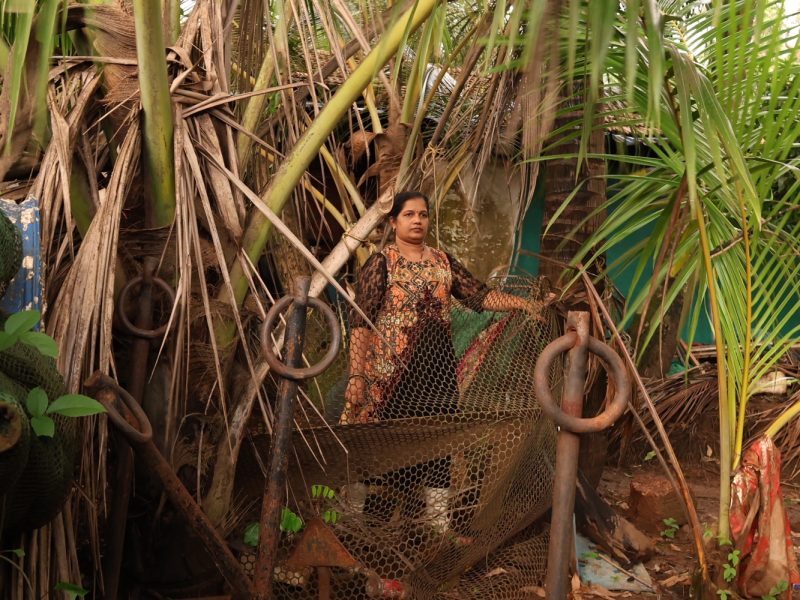How Kenya’s grocery stores might be hurting local farmers.
When the Mauritian private equity fund, Adenia Capital IV, bought Kenyan supermarket chain Quickmart and merged it with rival Tumaimi in 2019, the benefits to investors were obvious. Under the terms, all 13 Tumaimi stores in Kenya would rebrand as Quickmarts, making it the third-largest supermarket chain in Kenya by number of stores overnight. In a joint statement, the two supermarket chains said this new entity would “enhance the capacity to accelerate expansion” and bolster “operational efficiencies.” With an influx of capital, the expanded Quickmart was also poised to buy up smaller stores around the country and become an even larger retail powerhouse, extending its operations beyond dense shopping areas and into quieter residential areas on the periphery of Kenya’s major cities.
Beyond lower prices and expanded access, Quickmart and its private equity owner also spoke of social advantages for ordinary Kenyans. At the time of the merger, 14,000 farmers across the country supplied the chain. With time, Quickmart expected them to supply about 30 percent of its fresh produce. In a country where an estimated 40 percent of people derive at least some of their income from agriculture, the promise of more opportunities for farmers looked like a benefit for everyone.
Since exploding onto the scene in the early 2000s, there’s been a steady rise in supermarkets across Kenya. In 2002, there were four supermarket chains in the country; by 2018, there were ten. Though more “informal” operations, like market stalls, still account for the vast majority of Kenyan grocery sales, in 2020, the proportion of groceries sold through supermarkets was as high as 15 percent. By the end of the decade, such “modern retailers” could account for as much as 25 percent of sales, according to a report from Boston Consulting Group.
It’s a similar story across the developing world, where supermarkets are rapidly displacing other retailers to become the place of choice to buy food. In doing so, supermarkets have become a major force in the Global South, not just in retailing, but in agricultural purchasing. But a closer look shows the new phenomenon has often done more harm than good for the small farmers these supermarket chains and their investors claim to help.
~
Well into the 20th century, buying groceries in the United States was a lot like buying them in many parts of Africa today: Different vendors sold different items, like meat, produce, oil, or rice, independently, but in close proximity.
As journalist Benjamin Lorr explains in his book, The Secret Life of Groceries: The Dark Miracle of the American Supermarket, the idea of a big store that sells everything in one place only goes back a century. Michael Cullen, the New Jersey grocer who pioneered the supermarket concept, struggled and failed to persuade colleagues about its viability for years. But when he opened his King Kullen store—the first supermarket in history—in New York in 1930, the Great Depression was raging, and the store’s wide range of heavily discounted offerings quickly proved indispensable to legions of customers. Other stores soon followed.
“They came with names like Big Bear, Giant Tiger, Bull Market, Great Leopard, announcing their size and price-chopping ferocity with a zoological zeal that puzzles the modern ear,” Lorr writes. “Adding in-store mascots and costumes, parades and pullout advertisements, each trying to pile up merchandise into ever higher displays of abundance.”
By the 1960s, virtually every new grocery store in America was a supermarket, and regional and national chains like Safeway and Kroger became household names throughout the country. Since big supermarkets meant big parking lots, people could also bring their cars—by then an indispensable part of modern life. And because these stores offered everything in one place, families could load up for the week in a single transaction.
Size came with a cost advantage, both for stores and for customers. By buying so much food at once, supermarkets could insist on lower prices from farmers, then sell it to consumers for less than their smaller competitors, thus drawing more people and fueling their own expansion.
But the supermarkets’ edge was often their suppliers’ curse. Dealing with a big supermarket chain meant farmers could sell vast amounts of their products, but it also made them beholden to them. Some farmers got by under this new regime by adapting the stores’ model for themselves, consolidating with each other, getting bigger, and selling at volume to make up for the smaller margins on each item. More often, however, farmers went out of business entirely.
In developing countries today, farmers are facing a similar threat. As a report from the African Climate Foundation recently found, rising supermarket chains typically impose burdensome costs onto farmers in the form of “fees, terms and supply conditions” that only the very largest farmers can endure.
In Kenya, smaller farmers are already suffering. In 2016, the Competitive Authority of Kenya (CAK), a government agency formed to regulate market competition, found that a number of supermarkets had abused their power by pressing new fees onto suppliers after signing contracts. Soon after, Kenya became only the second country in Africa, after South Africa, to prohibit such abuses in legislation.
Kenya and South Africa’s relative affluence may distinguish them from most countries in Africa, but, as supermarkets spread across the continent, they offer a warning of how supermarkets can harm farmers, even with regulations in place. In 2023, CAK hit the local operators of Carrefour, a French supermarket chain, with a record $8.5 million fine after concluding that the chain had climbed the ranks in Kenya’s supermarket industry by demanding crushing discounts from suppliers with one hand, while promoting impossibly low prices to consumers with the other. Carrefour has said it will appeal the decision, but it’s not the first time the company and its local partners have been accused of harming a supplier. A few years earlier, CAK ruled against Carrefour’s local operators after a Kenyan yogurt producer, Orchards, argued it had been forced to give Carrefour steep discounts and even free merchandise that the supermarket later turned around and sold.
Kenya’s high court upheld the ruling last year. By then, Orchards had already gone out of business.
~
You might think consumer demand is the sole driving force behind the rise in supermarkets in the Global South. It’s true that in Kenya and other developing countries, an emergent class of consumers has come to expect the same luxuries that people in the United States and Europe have long enjoyed. But the worldwide shift towards supermarkets isn’t just a free market trend: It’s aided by a heavy hand from taxpayers in the Global North.
When Adenia Capital IV purchased Quickmart in 2019, more than 40 percent of the fund’s €230 million came from government-controlled development finance institutions. Development banks from Belgium, France, the United Kingdom, Switzerland, Austria, and Germany all contributed, as well, along with two multilateral banks—the International Finance Corporation (IFC), part of the World Bank Group, and the European Investment Bank, the European Union’s development bank.
Similar taxpayer-funded institutions underwrite supermarkets all over the developing world. In the last two years alone, the European Bank for Reconstruction and Development, another development bank, has invested in supermarket chains in Uzbekistan, Romania, Turkey, Albania, and elsewhere. In 2025, the IFC promised up to $30 million to help Kazyon, an Egyptian chain, expand in Morocco. Two years before, Kazyon also received $165 million from Development Partners International, a private equity fund backed by development banks from France and the UK.
European development banks are typically mandated to use their capital to alleviate poverty in developing countries, and often justify investments in supermarkets as a means of helping women and “modernizing” agricultural economies. Consider the Netherlands’ development bank, FMO, which provided $23 million to Azerbaijan’s Araz Supermarket in 2024 to help it build a new distribution facility. FMO said the investment would “contribute to gender equality” since Araz employed a number of women. The bank also said it would help Araz provide “modern working conditions” in a poor region of the country.
But despite investors’ claims, history has shown that the rise and consolidation of supermarkets is usually also bad news for small farmers. Development banks may tout an altruistic mission, but the supermarkets appeal to them for the same reason they appeal to commercial banks: not because they support local agriculture or gender equality, but because they are reliable investments. What benefits they provide to rural communities is less important than whether they grow and turn a profit.
One way to make conditions more equitable for farmers is to implement regulations that dictate what supermarkets can and cannot do to suppliers. Since 2010, the UK, Australia, and New Zealand have adopted mandatory codes that bar grocers from practices like changing the terms of a supplier contract unilaterally or delaying payments to suppliers. In Africa, two countries—Kenya and Namibia—have adopted similar codes; though, for now, adherence is voluntary. That’s an inherent weakness: As the African Climate Foundation notes—and as Kenya’s recent history of supermarket-supplier relations has demonstrated—true change requires enforcement.
Development banks could also play a role in obliging countries to adopt these stronger regulations. By promising to invest in supermarkets only in countries that have adopted mandatory codes of conduct, a bank like the IFC could ensure its capital does more to help than harm the small farmers—not just in Africa, but in developing countries around the world—on whose labor agricultural economies depend.



